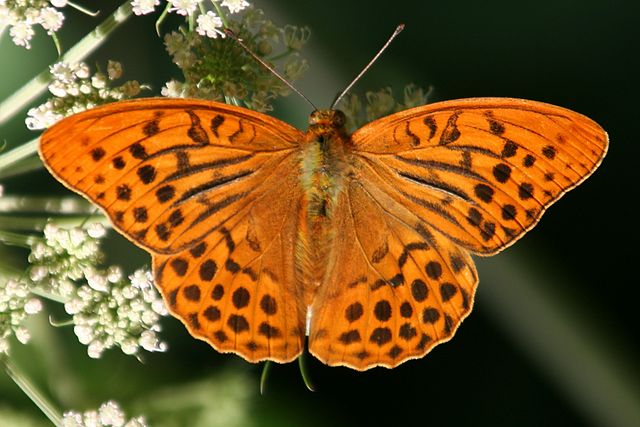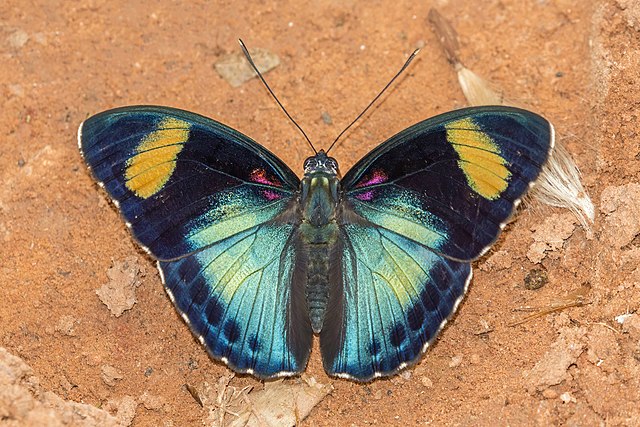The Heliconiinae, commonly called heliconians or longwings, are a subfamily of the brush-footed butterflies. They can be divided into 45–50 genera and were sometimes treated as a separate family Heliconiidae within the Papilionoidea. The colouration is predominantly reddish and black, and though of varying wing shape, the forewings are always elongated tipwards, hence the common name.
Male of the silver-washed fritillary (Argynnis paphia), type species of Argynnis and the Argynnini
Well-known tawny coaster of the Acraeini presently goes by the scientific name Acraea terpsicore.
Heliconiini caterpillars: Julia heliconian (Dryas iulia) (left) and zebra longwing (Heliconius charithonia)
Cruiser butterfly Vindula arsinoe of the Vagrantini
The Nymphalidae are the largest family of butterflies, with more than 6,000 species distributed throughout most of the world. Belonging to the superfamily Papilionoidea, they are usually medium-sized to large butterflies. Most species have a reduced pair of forelegs and many hold their colourful wings flat when resting. They are also called brush-footed butterflies or four-footed butterflies, because they are known to stand on only four legs while the other two are curled up; in some species, these forelegs have a brush-like set of hairs, which gives this family its other common name. Many species are brightly coloured and include popular species such as the emperors, monarch butterfly, admirals, tortoiseshells, and fritillaries. However, the under wings are, in contrast, often dull and in some species look remarkably like dead leaves, or are much paler, producing a cryptic effect that helps the butterflies blend into their surroundings.
Nymphalidae
Peacock (Aglais io)
Crimson-spotted forester (Euphaedra themis)
Monarch butterflies (Danaus plexippus)








